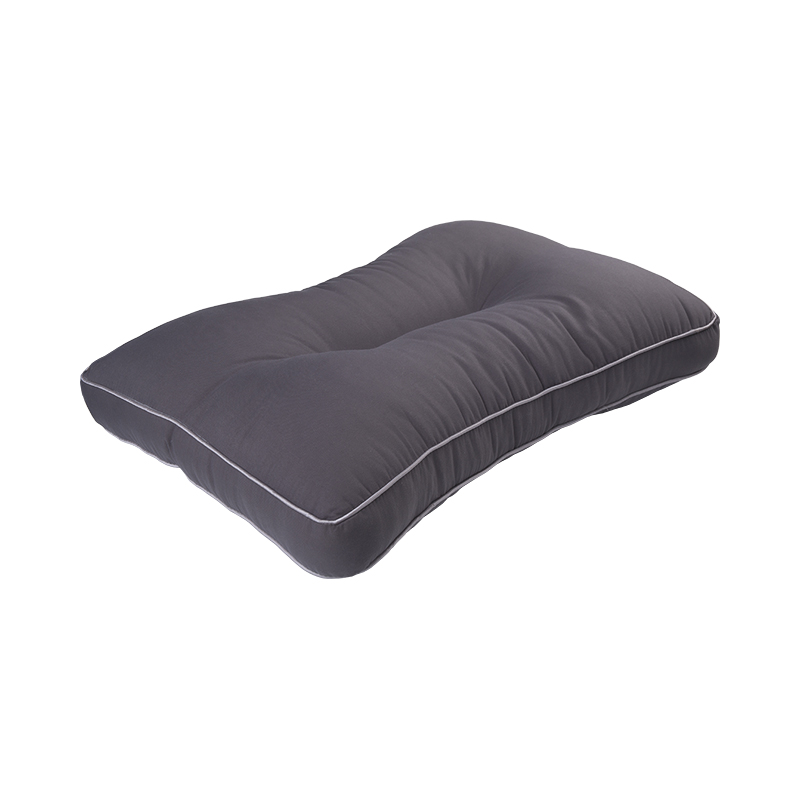The wear resistance of hotel pillows has a significant impact on their long-term comfort and appearance. As hotel supplies, pillows not only need to provide good comfort in a short period of time, but also need to withstand frequent use, washing and daily wear. Therefore, wear resistance is not only related to the appearance and life of the pillow, but also directly affects the comfort of the guest experience. Specifically, the following aspects reflect the impact of wear resistance on the long-term use of pillows:
1. Appearance maintenance and beauty
Fabric wear resistance: If the outer fabric of the pillow (such as cotton, polyester or blended fabric) does not have sufficient wear resistance, it is easily affected by repeated friction and use, resulting in pilling, fading, de-threading or breakage on the surface. Over time, the surface of the pillow may be significantly damaged, affecting the overall appearance and the image of the hotel.
Anti-wear technology: If the hotel pillow uses materials with higher wear resistance or undergoes special processing (such as anti-pilling, anti-compression, etc.), it can effectively delay wear and keep its surface flat and smooth. After long-term use, the pillow surface can still maintain a good appearance, thereby enhancing the quality of the hotel.
2. Comfort and support
Retention of filling: The wear resistance of pillows is not only reflected in the fabric, but also in the durability of the filling. For example, if a down pillow or memory foam pillow lacks wear resistance, the filling may compress or lose elasticity after long-term use, resulting in insufficient support and affecting comfort. Pillows with high wear resistance can maintain the stability and shape of the filling, so that the pillow can still provide effective support and comfort after long-term use.
Continuous comfort: Improved wear resistance helps maintain the elasticity and support of the pillow, especially in the support of the head and neck. Pillows with poor wear resistance may become flat, deformed or collapsed as the use time increases, which in turn affects the quality and comfort of sleep.
3. Washability and service life
The frequency of pillow washing: Hotel pillows need to be washed frequently, so their wear resistance determines their performance after multiple washings. The fabric of pillows with poor wear resistance may fade, become thinner or deformed after frequent washing, which affects the appearance and comfort. Pillows with strong wear resistance can withstand more washings and maintain their appearance and function for a long time.
Filling resistance: Filling materials with high wear resistance (such as high-density memory foam, compression-resistant down, etc.) can maintain their shape during washing and are not easy to collapse, ensuring comfort and support during long-term use. Filling materials with low wear resistance may lose elasticity due to compression during washing, causing the pillow to deform and affecting the user experience.
4. Continuity of guest experience

The direct correlation between appearance and user experience: When guests check in, they often evaluate the quality of the hotel by the appearance and comfort of the pillow. Pillows with good wear resistance can maintain a novel appearance for a long time and increase customer satisfaction. On the other hand, pillows with poor wear resistance may affect the guest's sleeping experience due to wear or deformation after a period of use, which in turn affects their overall evaluation of the hotel.
Continuous comfort experience: If the hotel pillow has good wear resistance, the pillow can remain comfortable and provide stable sleep support no matter how many times the guest uses it during his stay. If the pillow has poor wear resistance, it may collapse, deform or lose support after long-term use, causing guests to experience different comfort levels during subsequent stays, thus affecting the loyalty of repeat customers.
5. Economy and cost control
Durability and cost-effectiveness: Pillows with better wear resistance can withstand more use and washing times, thereby reducing the need for frequent pillow replacement and reducing the long-term operating costs of the hotel. On the contrary, pillows with poor wear resistance may need to be replaced in a shorter period of time, thereby increasing the hotel's material procurement and management costs.
Save resources: Wear-resistant pillows that are used for a long time can reduce resource waste while reducing frequent purchases, which is in line with the trend of sustainable development.
The wear resistance of hotel pillows has a direct impact on their long-term comfort and appearance. By selecting highly wear-resistant materials and high-quality manufacturing processes, hotels can effectively extend the service life of pillows, ensure that they provide good support and comfort for a long time, and maintain a novel and neat appearance. This not only improves the guest's stay experience, but also effectively controls the hotel's operating costs, achieving a dual balance between economy and quality.